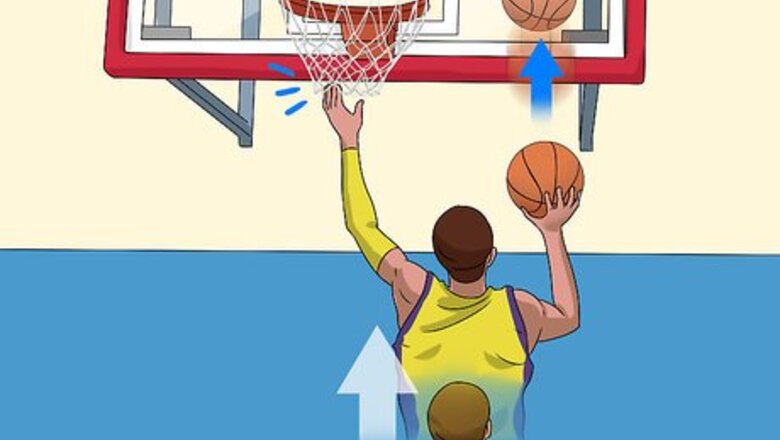
views
Improving Your Skills
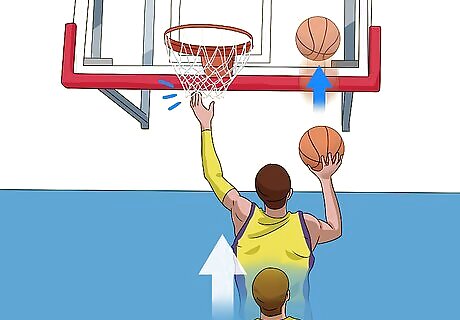
Do McHale taps. Just as you need to practice skills like shooting and dribbling, engage in exercises that develop your rebounding skills. McHale taps are one exercise you can use to improve your coordination and skill at rebounding. Move to the right side of the backboard. While jumping, dribble the ball off the backboard using your right hand. Dribble the ball while you are in the air. You should not be jumping between dribbles. Each jump is its own dribble. Try to touch the rim with your left hand with each dribble you make with your right. At first, you may not be able to reach the rim. That's okay. Try to at least get the net. You'll work your way up with time. Do this for 50 jumps or for 2 minutes. Then, switch it up. Dribble with your left hand and touch the net or rim with your right. Repeat for another 50 jumps or 2 minutes.
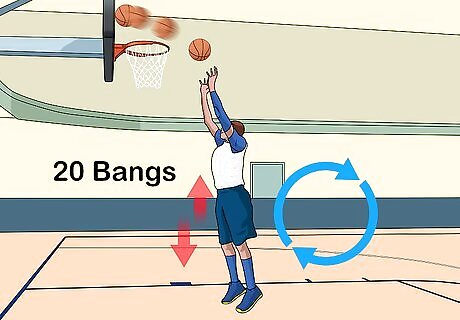
Practice bangs. Bangs are another great exercise to help improve your rebound skills. To start, pick up the ball with two hands. Jump and then bang the ball on the backboard 3 times, using as much force as possible. Jump one more time, this time putting the ball in the basket. Do about 20 bangs. Then, change sides. Move to the left side of the board and repeat the process, once again doing 20 bangs.
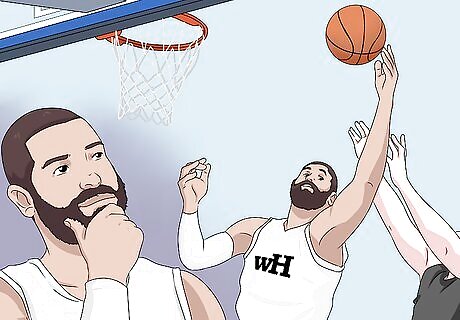
Develop a rebounding mindset. If you want to get more rebounds, developing the right mindset is key. Understand that proper rebounding techniques are as important as dribbling, shooting, and other skills. Make rebounding a priority. If you're able to rebound a lot of shots, you increase your team's chances at victory. Gaining control of the ball as fast and often as possible is key to a successful game. Always be on the lookout for potential rebounds when playing basketball. Be aggressive. Go into the game ready to take control of the ball. Do not shy away from boxing players out when necessary. Having a "loose ball" mentality, meaning you're lax in regards to who is controlling the ball and when, decreases your chances of winning. Go into each game ready to be aggressive and go for rebounds when possible.
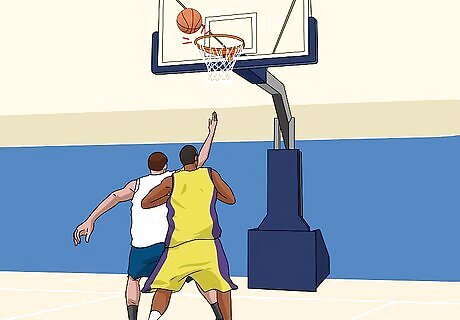
Learn to anticipate missed shots. Most shots in basketball, especially first shots, are missed. Even at the professional level, players only make 43% of their first shot attempts. Therefore, each time a shot is taken you have a solid shot at a rebound. Learn to be aware of the factors that increase the likelihood of a rebound. Pay attention to your opponents as the game progresses. Players have preferences as to where they shoot the ball. If you notice one player tends to always shoot from the right corner, go to the right corner when that player has the ball. This way, if the shot is a rebound, you have a solid chance of intercepting it. Understand the angle the shot is likely to follow. If a shot is taken anywhere from the wing to the baseline, 80% of the time these shots will rebound from the same angle. Shots taken above the foul line rebound to sides 60% of the time and from the front of the rim 40% of the time. Keeping this information in mind, watch where shots are made. Move to the part of the court where they're likely to rebound. You will not make every rebound this way, but you will increase your chances greatly.
Getting in Position

Find a good position on the court. Before the shot even goes in the air, be on the lookout for a good position. First, look for other players on your team, and make sure you are not getting in a teammate's way. If you do not see any teammates close to the hoop, move in to try and get the rebound. Communicate with your teammates by yelling, “Shot” as soon as you see the ball go up. Both defensive and offensive players should look for a rebound, so don't worry about your position. Rebounds are important to the game, so go for them as much as possible. If you took the shot yourself, follow the shot to the basket to try to get your own rebound. The majority of first shots in basketball are not made. Therefore, there's a good chance you'll miss on your first try, so be prepared for a rebound.
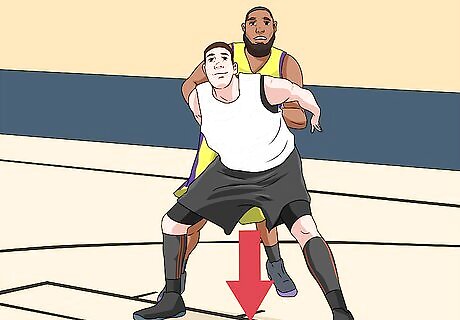
Get low to the ground. If you did not take the shot yourself, a good way to prepare for a rebound is to get low on the ground. You may have to jump in the air to catch the basketball. You may also need to block opposing players going for the rebound, a process called boxing out. This usually involves crouching slightly so, in the event you have to box out another player, you will already be in the right position. Use your legs to keep other players from getting between you and the basket. Bend your knees slightly and spread your legs, making your body bigger. This will block other players behind you who are considering the rebound. Stay on the balls of your feet so you are ready to move and jump when the ball comes down.

Spread your arms. Keep your hands up and arms open wide. This allows you to have the widest coverage on the court, blocking other players. It also prepares your arms for catching the ball. When the rebound comes, you'll need to jump and grab quickly. The opposing player can also choose to pin your arms down. This is another reason why keeping your arms up is important.
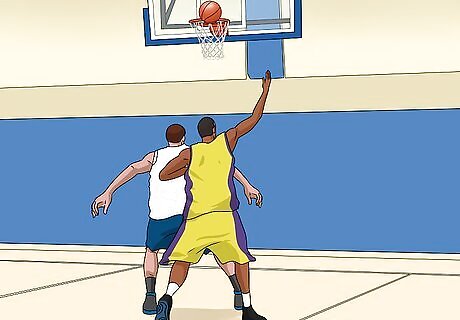
Box out your opponent, if necessary. Boxing out, as stated, is a means of blocking another player from reaching the basket. You can use your hands and feet to position yourself between the opposing player and the basket. If you're crouching and spreading your arms, you're already in the box out position. Just keep an eye on the player behind you. Push the other player back with your behind as you spread your arms and legs out wide to keep them behind you. You have to make first contact, so locate any potential opposing players and move in front of them. Be prepared to reposition yourself as the opposing player attempts to move around you. Move backward if necessary, forcing the opposing player further back in the court. If you're boxing out an opponent too close to the net, the player can easily jump up over you and get the rebound.
Gaining Control of the Ball
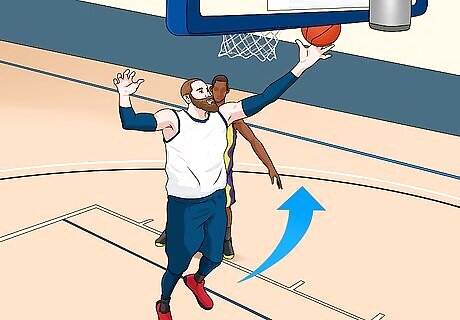
Jump towards the ball. As soon as you see the ball come off the glass or the rim of the basket, spring up with your arms outstretched. You want to grab the ball as quickly as you can to secure a rebound. Be aggressive in moving towards the ball. If you are afraid to jump because someone else is jumping as well, you will have a lesser chance of getting the rebound. Even if another player is going for the ball, take the risk and jump. You may be the first one to get the rebound. Keep your arms stretched toward the ball as you jump. Keep your eye on the ball, following its movements so you can best aim your grasp.
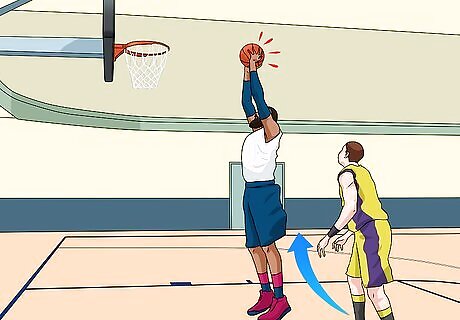
Grasp the ball with both hands, if possible. Always try to grab the ball with both hands. Rebounding with one hand will give your opponents an opportunity to swat the ball away easily and take possession for themselves. Hug the ball to your body as you come down. This protects the ball from being intercepted from other players as you come down from your jump. Extend your elbows outward in a defensive position. This also discourages other players from grabbing the ball from your arms. As you reach the ground, pull the ball up to your chin. This prepares you to pass the ball to a teammate.
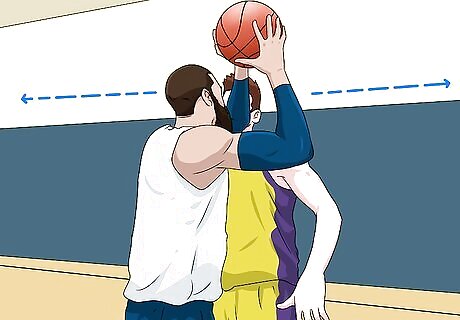
Have a plan to pass the ball. As soon as you grasp the ball, scan the court. Look for an open teammate moving down court to pass the ball. Give a quick pass out to send the ball towards your basket. If you got an offensive rebound, try to put the ball back up for a basket. If you don’t have an open shot, pass or dribble the ball out to get a better position on the net. If you're rebounding your own shot, try to immediately throw the ball towards the basket again if you have an open shot.



















Comments
0 comment